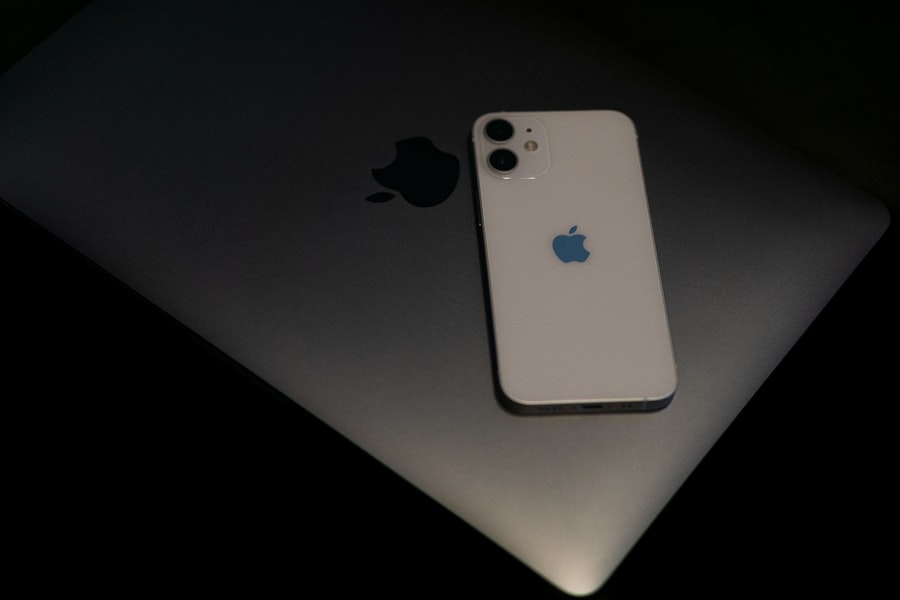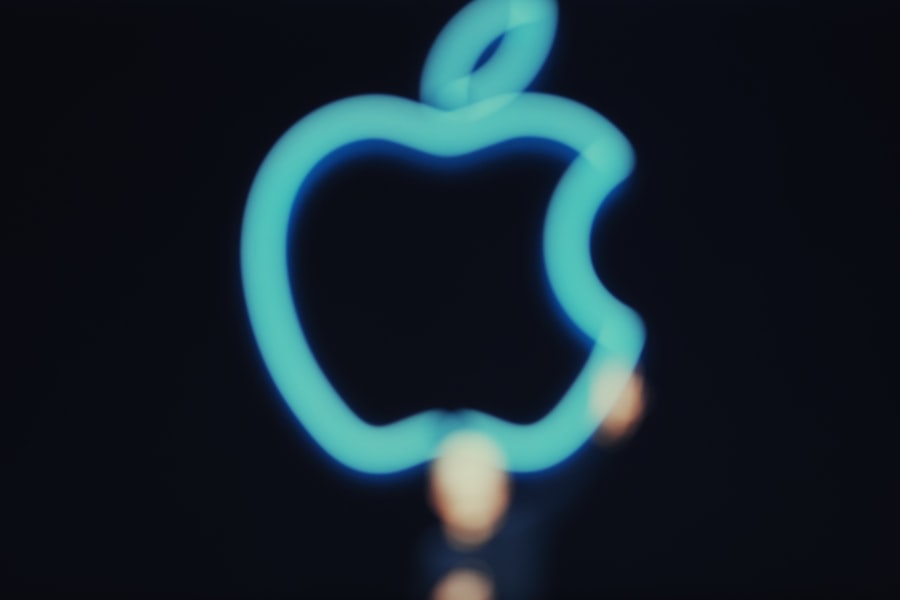Apple products, renowned for their sleek design and user-friendly interface, are not immune to a variety of issues that can frustrate users. One of the most frequently reported problems is battery life degradation. Over time, the lithium-ion batteries used in devices like the iPhone, iPad, and MacBook can lose their ability to hold a charge effectively.
Users may notice that their devices drain power more quickly than when they were new, leading to interruptions in daily use. This issue can be exacerbated by software updates that demand more resources or by running multiple applications simultaneously. Another common issue is software glitches, which can manifest in various ways, such as apps crashing unexpectedly or the operating system freezing.
For instance, users may find that their iPhone becomes unresponsive after a software update, requiring a hard reset to regain functionality. Additionally, compatibility issues can arise when new software is released, leaving older devices struggling to keep up with the latest features. These problems can be particularly frustrating for users who rely on their devices for work or personal tasks, as they can disrupt productivity and lead to data loss if not addressed promptly.
Key Takeaways
- Common issues with Apple products include battery life, software glitches, and hardware malfunctions.
- Contact Apple Support through phone, chat, or in-person at an Apple Store for assistance with your Apple products.
- Troubleshooting software problems can often be resolved by updating your device’s software, restarting, or resetting your device.
- Troubleshooting hardware problems may involve checking for physical damage, cleaning ports, or seeking professional repair services.
- Understanding Apple warranty and repair policies can help you determine if your product is eligible for free repairs or replacements.
How to Contact Apple Support
When faced with issues related to Apple products, knowing how to contact Apple Support is crucial for resolving problems efficiently. Apple offers multiple channels for support, including phone support, online chat, and in-person assistance at Apple Stores. Users can visit the official Apple Support website to access a wealth of resources, including troubleshooting guides and community forums where they can seek advice from other users.
The website also provides an option to initiate a support request, allowing users to describe their issue and receive tailored assistance. For those who prefer direct communication, calling Apple Support is an effective option. The support team is available 24/7 in many regions, providing assistance for a wide range of issues.
When calling, it’s helpful for users to have their device serial number and any relevant information about the problem at hand ready to expedite the process. Additionally, Apple’s support app allows users to manage their support requests and track the status of repairs or inquiries directly from their devices.
Troubleshooting Tips for Software Problems

Software problems can be particularly vexing, but there are several troubleshooting steps that users can take to resolve these issues before seeking professional help. One of the first steps is to restart the device. This simple action can often clear temporary glitches and restore normal functionality.
For instance, if an app is crashing frequently on an iPhone, restarting the device may resolve the issue by refreshing the system’s memory. If restarting does not solve the problem, users should consider updating their software. Apple regularly releases updates that address bugs and improve performance.
To check for updates on an iPhone or iPad, users can navigate to Settings > General > Software Update. On a Mac, updates can be found under System Preferences > Software Update. Keeping software up to date not only enhances security but also ensures compatibility with apps and services that may be affected by outdated software.
In cases where specific applications are malfunctioning, users can try deleting and reinstalling the app. This process often resolves issues related to corrupted files or settings that may have developed over time. Additionally, clearing cache data or resetting app preferences can help restore functionality without needing a complete device reset.
Troubleshooting Tips for Hardware Problems
| Problem | Troubleshooting Tip |
|---|---|
| No power | Check power cable and outlet, test with different power source |
| Overheating | Clean dust from fans and vents, ensure proper airflow |
| Slow performance | Check for malware, update drivers and software, add more RAM |
| Hardware not recognized | Check connections, update drivers, test on another device |
| Strange noises | Check for loose components, replace faulty hardware |
Hardware problems can be more complex than software issues, but there are still several steps users can take to diagnose and potentially resolve these challenges. One common hardware issue is a malfunctioning display, which may present as flickering screens or unresponsive touch functionality. In such cases, users should first check for any physical damage or debris on the screen that could be causing the problem.
Cleaning the screen gently with a microfiber cloth can sometimes resolve touch sensitivity issues. If the display appears intact but continues to malfunction, users should test the device in different environments. For example, if an iPhone screen flickers only in certain lighting conditions, it may indicate a problem with the ambient light sensor rather than the display itself.
Additionally, connecting the device to an external display (for Macs) can help determine whether the issue lies with the internal hardware or the operating system. Another common hardware issue involves connectivity problems with Wi-Fi or Bluetooth. Users experiencing these issues should first ensure that their router is functioning correctly and that other devices can connect without problems.
Restarting both the device and the router can often resolve connectivity issues. If problems persist, resetting network settings on the device may help restore proper functionality. This action will erase saved Wi-Fi networks and Bluetooth pairings but can resolve persistent connectivity issues.
Understanding Apple Warranty and Repair Policies
Apple’s warranty and repair policies are designed to provide customers with peace of mind regarding their purchases. Most Apple products come with a one-year limited warranty that covers manufacturing defects and hardware failures under normal use conditions. This warranty does not cover accidental damage or issues arising from unauthorized modifications or repairs.
Understanding these terms is essential for users who may need repairs or replacements. In addition to the standard warranty, Apple offers an extended service plan known as AppleCare+. This plan extends coverage for up to two years from the date of purchase and includes additional benefits such as coverage for accidental damage (subject to a service fee).
Users considering this option should evaluate their usage patterns; frequent travelers or those prone to accidents may find value in the added protection. When seeking repairs, customers should be aware of Apple’s policy regarding authorized service providers. Repairs performed by unauthorized technicians may void warranties and lead to further complications down the line.
It’s advisable for users to utilize Apple’s official repair channels whenever possible to ensure that their devices are serviced correctly and maintain their warranty status.
How to Schedule a Genius Bar Appointment

For those who prefer face-to-face assistance, scheduling a Genius Bar appointment at an Apple Store is an excellent option for resolving technical issues. The process begins by visiting the Apple Support website or using the Apple Support app on an iPhone or iPad. Users can select their device type and describe their issue, which will guide them through scheduling an appointment at a nearby store.
When scheduling an appointment, it’s important for users to choose a time that allows them to arrive punctually and bring any necessary documentation or accessories related to their device. For example, if a user is experiencing battery issues with their iPhone, bringing along the charging cable and any relevant receipts can help technicians diagnose the problem more effectively. Upon arrival at the store, customers should check in at the designated area for Genius Bar appointments.
It’s advisable to arrive a few minutes early to allow time for any necessary paperwork or preliminary discussions with staff members before meeting with a technician. During the appointment, users should clearly explain their issue and any troubleshooting steps they have already taken to facilitate a more efficient resolution.
Tips for Getting the Most out of Apple Support
To maximize the effectiveness of interactions with Apple Support, users should come prepared with relevant information about their devices and issues. This includes having device serial numbers readily available and being able to articulate specific symptoms or error messages encountered during use. Clear communication helps support representatives understand the problem more quickly and provide tailored solutions.
Additionally, users should take advantage of Apple’s extensive online resources before reaching out for support. The Apple Support website features a comprehensive library of articles covering common issues and troubleshooting steps that may resolve problems without needing direct assistance. Engaging with these resources not only empowers users but also streamlines the support process by reducing wait times.
Another useful tip is to remain patient and open-minded during support interactions. Technical issues can sometimes be complex and require multiple steps to diagnose effectively. By maintaining a collaborative attitude with support representatives and being willing to follow their guidance, users increase their chances of achieving a satisfactory resolution.
Resources for Self-Help and DIY Troubleshooting
For those who prefer self-help options or wish to troubleshoot issues independently before contacting support, numerous resources are available online. The official Apple Support website serves as a primary hub for troubleshooting guides covering everything from basic setup instructions to advanced technical issues. Users can search for specific topics or browse categories related to their devices.
YouTube also hosts a wealth of video tutorials created by both Apple and independent creators that demonstrate various troubleshooting techniques visually. These videos often provide step-by-step instructions on resolving common problems such as restoring devices from backups or performing factory resets. Community forums such as Apple Communities allow users to connect with others who may have experienced similar issues.
These platforms provide opportunities for peer-to-peer support where individuals can share solutions that worked for them in resolving specific problems. Engaging with these resources empowers users to take control of their device maintenance while fostering a sense of community among Apple enthusiasts. By leveraging these self-help resources alongside official support channels when necessary, users can enhance their overall experience with Apple products while minimizing downtime caused by technical issues.



